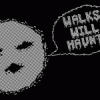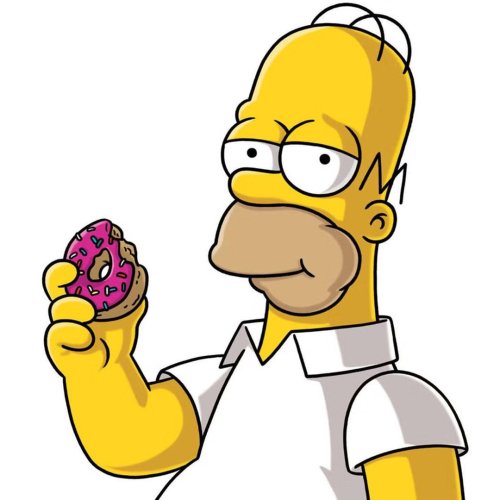
Twins Video
When the Twins signed Josh Willingham, the team acquired a hitter who was almost built for the configuration of their ballpark. As other right-handers had experienced, a ball driven into center or the right-center gap was met with resistance and died in the outfield. Willingham, meanwhile, yanked almost every pitch he swung at and did so with authority. He eventually passed the wisdom down to some of the current Twins. As he told Brian Dozier “the fences are a lot closer in left.” Both Dozier and Trevor Plouffe have since passed Willingham for the home run lead at Target Field but each has credited Willingham with the power guidance.
So, does Park fit into that pull-power mold? Thanks to the contributors of YouTube, we have access to several seasons worth of Park's home run compilations that, if you are a Twins Daily writer with no life, you can chart each one of those available and analyze the data to answer that very question.
There is little doubt that Park has power, inferior competition of not. At age 25 in 2012, he launched 31 home runs -- a career-best and the most in the league that year -- but that would just be an appetizer for the coming main course. After 37 in 2013, he socked 52 in 2014 and 53 in 2015. Even with the league's caveats (lower velocity, smaller ballparks, juiced baseballs), hitters do not reach those totals that consistently without being a special talent.
In 2012 (which you can watch the compilation of home runs here), Park was much more of a standard power hitter: He pulled the majority of his home runs and most of the pitches were located belt-high in the zone but he also showed the propensity to turn on pitches down-and-away and middle-away. The zone chart below (from the pitcher's perspective) shows the location of each of his home runs that year.
The top video shows the level swing that Park displayed to destroy pitches in the middle (horizontal) of the zone while the lower clip demonstrates how he would turn on some pitches down and away.
http://i.imgur.com/cz84gzr.gif
http://i.imgur.com/My1IwUo.gif
More importantly, he punctuated nearly every round-tripper with a majestic bat flip.
Despite having fly ball tendencies, Park’s swing was much more level in 2012 than its current iteration. Plus 51.6% of his home runs were pulled, which would play decently at Target Field, but this changed drastically over the next few years. The home runs were not all skyscraping bombs, some were actually wallscrapers that needed assistance over the fence.
By 2014 (video here), there was a transformation in his swing. Park developed a steep upper-cut, giving his bat much more tilt in order for it to meet pitches on the same plane as they descended in the zone, creating towering flies that cleared fences (
What remained constant was how he kept his hands inside and close to his body before firing the barrel at the ball. He allowed the ball to travel deeper into the zone and drove balls into the middle of the field where the majority of his home runs left the field.
As you can see in the zone chart above, in addition to power coverage throughout the zone, Park was hitting more home runs down in the zone than before. In 2012 he did not have a home run on any pitch down-and-in. In 2014, he smacked 10. He also managed to redirect a lot of his pitches on the inner half into center or opposite field. While most hitters like Willingham would yank pitches down-and-in, Park actually hit a number of those pitches out in center. Watch this home run on a breaking ball on the inner-half. Since 2010 in the major leagues, according to ESPN/TruMedia’s data 94.7% of home runs on breaking balls inside were pulled, 5.1% went to center while just 0.2% went the other way. Meanwhile Park’s ability to keep his hands back and inside allows him to muscle this 80-mph pitch out towards right field:
http://i.imgur.com/yLnWVC5.gif
Take a closer look at how Park keeps his hands in next to his body in order to pull this 82-mph breaking ball down the left field line:
http://i.imgur.com/XY9K89S.gif
What’s interesting about Park’s 2014 numbers is that he hit 52 home runs but managed just 16 doubles. That speaks volumes towards his fly balls methods. If the ball wasn’t launched 100 feet past the fence, it was probably getting caught. In 2015 this changed a bit as he hit 53 home runs but followed that up with another 35 doubles leading to his absurd .714 slugging.
While only 30 of Park’s 53 home runs this past season would be available for video review, the trends for Park in 2015 (video here) were very similar to 2014. He had excellent power across all zones with the bulk of his home runs coming in zones that aligned with his downward bat tilt.
What did change, however, is that Park shot an even higher percentage of his charted home runs out to center field. As one scout noted, Park was given a 80-power grade on an 80-scale. Different evaluators will undoubtedly rate players differently but, for comparison’s sake, over the years Baseball America has rated Cubs’ Kris Bryant and Royals’ Mike Moustakas as 80-grade power. Among the Twins’ regulars only Miguel Sano was labeled with that kind of power tool but Baseball America rated Sano’s power at “just” a 70 (with Bryant and Texas’ Joey Gallo ahead of him). As we’ve seen, there are few ballparks of any size that can contain Sano’s power in any direction. That said, Target Field has been ultra tough on right-handers when it comes to home runs to center or right field.
If he is signed by the Twins, Target Field will indeed act as a deterrent to Park’s big flies to center. As one of the toughest venues to hit balls out toward center-right center, this should significantly reduce his home run expectations before even factoring in the jump in competition.
What about velocity? There is no question that the average velocity of pitchers in the KBO are well below the increasing average velocity of their MLB counterparts. In fact, most of that league’s velocity maxes out at the high-80s/low-90s. The same scout who suggested Park had 80-grade power, also said that he would struggle with fastballs inside. While facing little in the way of major league-caliber velocity, Park hit most of his home runs on fastballs below 90 MPH.
Park also showed in 2014 that he would use several different leg kicks depending on what the situation required. One, a big leg load with everything on his back leg before firing forward, the other a simple toe tap load that is just as effective:
http://i.imgur.com/0myGe9g.gif
http://i.imgur.com/FEdfYuX.gif
When Park’s former Nexen teammate Jung-ho Kang made the transition from the KBO to the Pittsburgh Pirates in 2015, he initially shelved his bigger leg kick in spring training. Like Park, Kang had a big leg kick but would use a muted version when faced with two-strike situations. Stateside, the added velocity and lack of familiarity with the new pitchers forced Kang into going with his muted kick more frequently. As his rookie season progressed, as he adapted to the speed of the game and grew more familiar with the competition, he deployed the big kick more often. Because of that, it is no surprise to see that Kang hit just four home runs in his first 74 games but 11 over his last 52. More likely than not, Park will have an adaptation process like that of Kang.
In all, don’t expect a huge translation in home run numbers from Park’s KBO seasons if he signs with the Twins -- both immediately and down the road. That’s not going far out on a limb but because of his straightaway power and heavy fly ball tendencies, plenty of those that would have become souvenirs in KBO’s smaller stadiums will remain in play, particularly at Target Field. Likewise, the need to acclimate to the improved competition will likely stifle his numbers at the season’s onset. Long term, he possesses an amazingly athletic swing with an 80-grade power tool and over time he should contribute to the Minnesota’s lineup.
MORE FROM TWINS DAILY
— Latest Twins coverage from our writers
— Recent Twins discussion in our forums
— Follow Twins Daily via Twitter, Facebook or email
— Become a Twins Daily Caretaker











Recommended Comments
Join the conversation
You can post now and register later. If you have an account, sign in now to post with your account.
Note: Your post will require moderator approval before it will be visible.